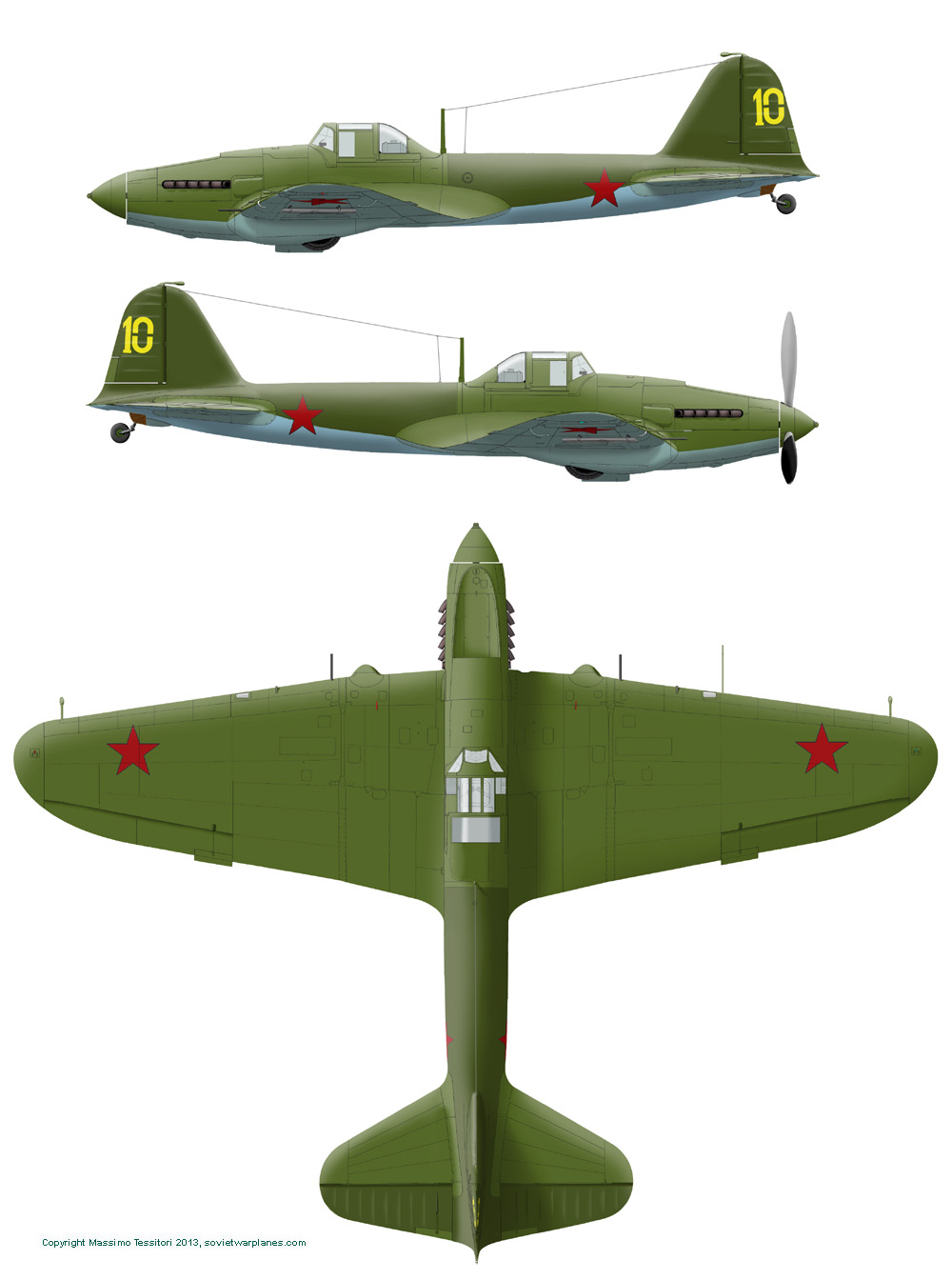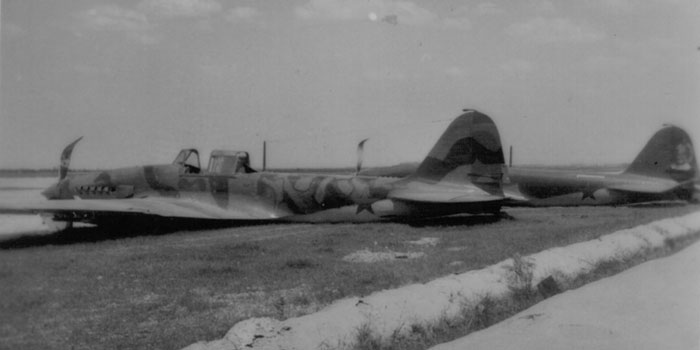
A pair of Il-2 at Shatalovo airfield, Smolensk region, when invaded by Germans; the photo was taken on 15/08/41.
The first plane is particularly interesting because of uts unusual camouflage, and appears on many photos of German veterans.
The second plane, possibly Yellow 10, bears the ordinary prewar green livery.
The first plane is of very early type, probably with metallic fuselage, as one can think comparing the lighter shade of the blue (A-18f) utilized on the metallic fuselage, with the slightly darker shade of AII light blue, utilized to paint the rear fuselage undersurface of the plane n.10 on the background, undoubtedly wooden as revealed by the rectangular stripped part on its rear back.
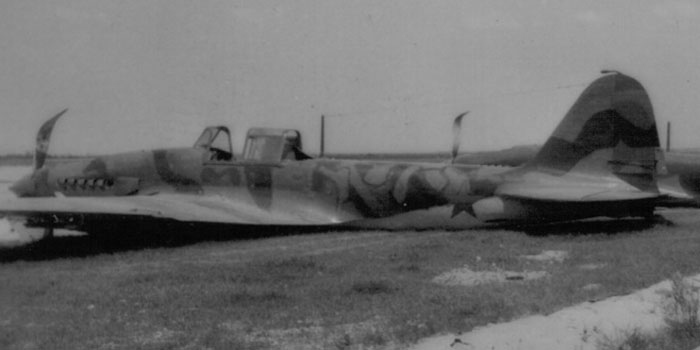
Besides, horizontal equally-spaced shadows on the stabilizator suggest the lines of rivets, bending the metal sheet.
Some characteristics of the very early planes were the lack of armour on the upper side of the canopy, the lack of the sheet that covers the upper part of the gap between spinner and engine cowling, the early type wing with balances to tips and ailerons, the 20 mm ShVAK guns and the landing light on both wings. The plane has a leather or tissue boot on the base of its tail wheel.
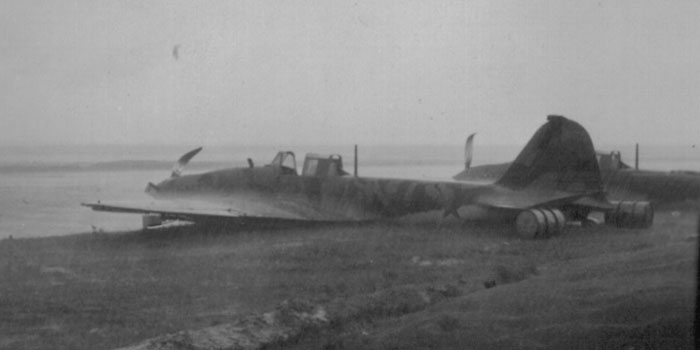
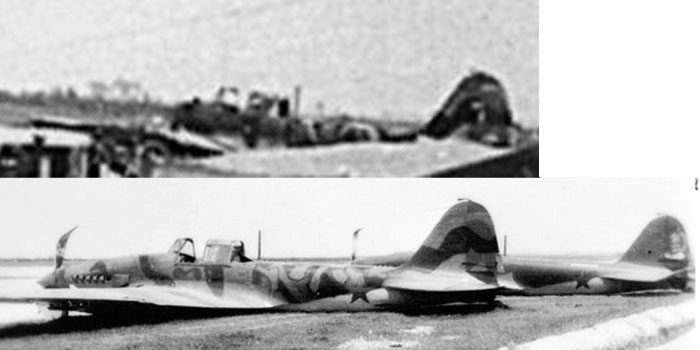
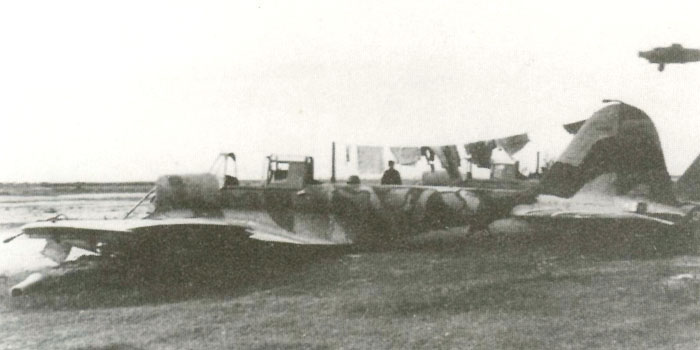
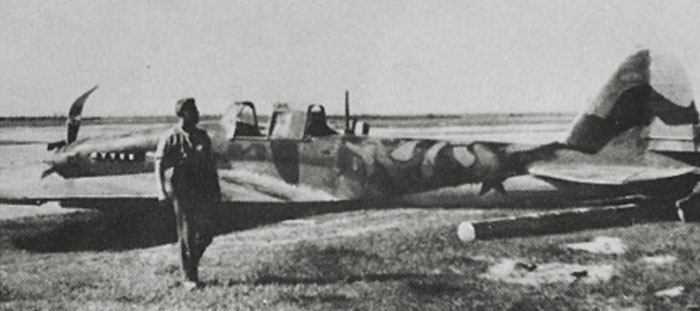
The camouflage is absolutely strange; at a first glance, it seems that two colors were added over the green background; but it is noticeable that, on some of the photos, many blotches appear all light, while in other photos, certainly made with different films or filters, the same blotches appear one light, another one dark.
The conclusion is that the blotches are of at least 3 colors plus the green background, and they must have a strongly different hue to justify the apparent inconsistencies on the photos.
One can suppose that at least three semigloss colors were added on the background painted with A-19f green: a lighter shade, possibly a light brown (maybe the 7k for tanks use), a light green (???) that appears as light on some photos and dark in other ones, and black (possibly painted by brush as last one).
The camouflage of the rear fuselage is more elaborated than that of the nose (and, for what seems to see, of wings), possibly because the rear fuselage is more easily accessible to painters.
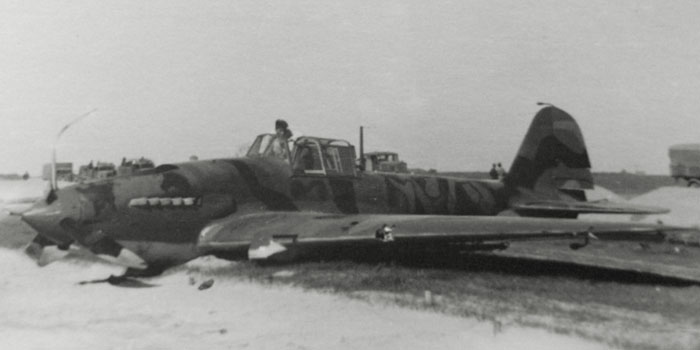

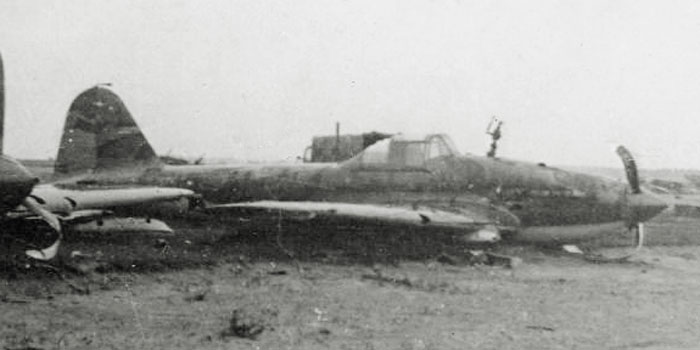
Two photos of the plane from another perspective.
Unfortunately all the many available photos are taken from the left side of the plane.
An interesting characteristic is that the front of the propeller blades, originally in natural metal, was camouflaged with brush strokes, apparently of black and green. The tips seems left unpainted.
For the few we can see of the wings, no any trace of the stars is visible on their uppersurfaces, only blurred lighter blotches. Probably the original markings were painted off with some of the camouflaging paints.
The only known photo from the right side.
Below, an interpretation of the camouflage. The light brown could be the color 7K used by the army for prewar tanks; light green could be the 2Le of army or any mix of green and yellow.
An higher resolution version of this artwork will be published on the book on Il-2 by Jason Moore.
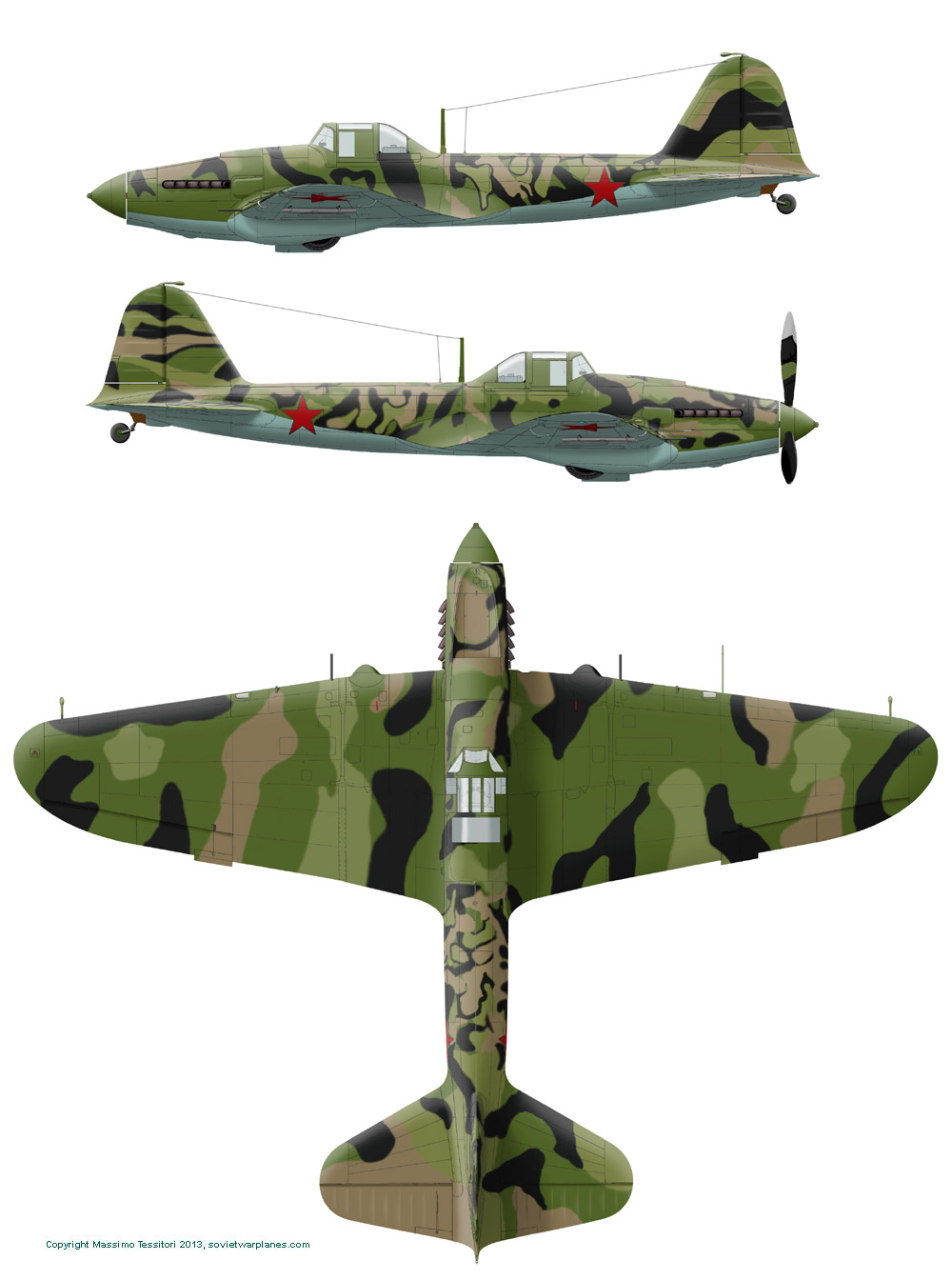

On this image, we see the right wing of the camouflaged plane; unfortunately very few is recognizable of its camouflage.
